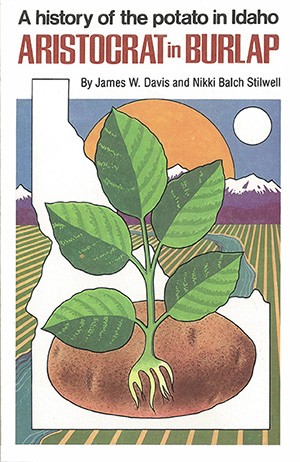.jpg) Staff meeting in 1943 included, left to right, Ray Dunlap, Harold Pratt, Henry Ankeny, Jack Simplot, Leon Jones, Owen Sproat, Harold Aird, and Pares Curtis.
Staff meeting in 1943 included, left to right, Ray Dunlap, Harold Pratt, Henry Ankeny, Jack Simplot, Leon Jones, Owen Sproat, Harold Aird, and Pares Curtis.
He contacted the Quartermaster Corps, and they were indeed interested in additional sources of dehydrated onions. Simplot acquired a tract of land west of Caldwell that had the convenient advantage of being in the onion-growing area of Southwest Idaho and Eastern Oregon. The land itself was a flat tract of bottom land south of the Boise River with a high saline content, which made it unsuitable for agriculture. It was also located on a railroad branch line that connected Caldwell, Greenleaf, and Wilder, Idaho. This site became the home of Simplot's first processing plant, a dehydration facility for onions.
The dehydration of onions started in 1940, and by 1942 during the war the United States Quartermaster Corps was looking for other sources of foods, particularly potatoes. Rodgers Brothers Company had dehydrated some diced potatoes in Idaho Falls in 1940, but large-scale drying of the famous Idaho product had not taken place.
Simplot tested the onion-dehydration equipment at the Caldwell site for the first runs of dehydrated potatoes and a satisfactory product was produced. From that point on, expansion took place as fast as equipment and materials became available. With more men being called into service every day, a demand for dehydrated foodstuffs became greater and greater. Selling food to the government was a profitable business and with the processing operation added to the large Simplot Produce Company, Jack Simplot was emerging as one of the rich, energetic young businessmen of the 1940s.
Simplot had hired a young chemist named Ray Dunlap to operate the quality control department of his potato and onion dehydrator at Caldwell. With wartime production running smoothly, Simplot began to talk with his staff members about the future of potato processing in postwar years. Although dehydrated diced potatoes were satisfactory foodstuffs for military use, they were not popular with servicemen and their postwar future showed little promise.
Dunlap began to experiment with other types of potato processing. He acquired a quick-freezing unit and made attempts to freeze potatoes in various forms as a means of preserving them from the processing plants to the consumer. Simplot states that one day Ray Dunlap walked into his office with a sample of French fried potatoes. He asked Simplot to sample them, which he did, and found them to be of good quality. Dunlap then revealed the fact that the French fries had been frozen, thawed out, and reconstituted. Simplot states that this was the beginning of the frozen French fried potato industry and that Ray Dunlap was the inventor of the new product.


.jpg) Staff meeting in 1943 included, left to right, Ray Dunlap, Harold Pratt, Henry Ankeny, Jack Simplot, Leon Jones, Owen Sproat, Harold Aird, and Pares Curtis.
Staff meeting in 1943 included, left to right, Ray Dunlap, Harold Pratt, Henry Ankeny, Jack Simplot, Leon Jones, Owen Sproat, Harold Aird, and Pares Curtis.